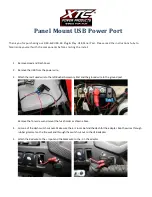
−
−
To shift from second to
first, pull the shift lever towards you,
then shift to the lower gear. This
position locks the transmission in
first gear. By upshifting and
downshifting through 1, 2, and D,
you can operate the transmission
much like a manual transmission
without a clutch pedal.
To shift to second,
pull the shift lever towards you, then
shift to the lower gear. This position
locks the transmission in second
gear. It does not downshift to first
gear when you come to a stop.
Use second gear:
For more power when climbing.
To increase engine braking when
going down steep hills.
For starting out on a slippery
surface or in deep snow.
To help reduce wheel spin.
When driving downhill with a
trailer.
When towing a trailer on level roads
under normal driving conditions, do
not use D3. This will increase the
automatic transmission fluid
temperature and may cause
overheating.
Shifting out of the D position will
cancel D3, and cause the D3
indicator to go out. Selecting the D
position again will resume D3, and
the indicator will come on.
Turning the ignition switch to LOCK
(0) turns D3 off. To use D3 when
you restart the engine, select the D
position and press the D3 switch
again.
The D3 indicator also comes on for a
few seconds when you turn the
ignition switch to ON (II).
If you shift into first position when
the vehicle speed is above 28 mph
(45 km/h), the transmission shifts
into second gear first to avoid
sudden engine braking.
If you exceed the maximum speed
for the gear you are in, the engine
speed will enter into the tachometer’s
red zone. If this occurs, you may feel
the engine cut in and out. This is
caused by a limiter in the engine’s
computer controls. The engine will
run normally when you reduce the
rpm below the red zone.
Automatic Transmission
First (1)
Engine Speed Limiter
Second (2)
196
04/12/03 16:48:04 31SJC600 0201
Main Menu
Table of Contents
▲
▼
















































